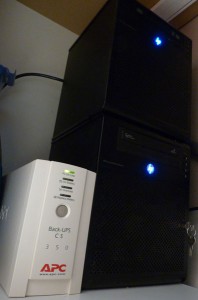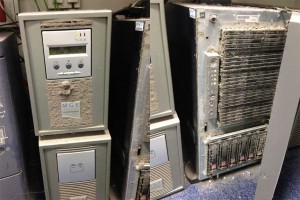In a previous post I showed how to shutdown two servers safely using just one UPS with a single communications port. It was pretty straight forward with the comms port connected to a Windows Server 2003 machine.
But doing the same with Windows Server 2012 is much more difficult, since Microsoft decided to remove the ability to run a program on a low battery event from its power management settings. To make things worse I discovered that a bug in Server 2008 and later meant that issuing a Shutdown command from the native power settings would not perform a clean shut down, instead killing the power in a few seconds. This is not good news for RAID arrays and data integrity.
Time for a new solution, and since Microsoft are of no use, help would need to come from a 3rd party. After research and testing answer came from Shutter, a small program that runs as a trigger and event type program for a variety of different scenarios, with battery discharging status being one. Luckily two instances of the program could be run, one to shut down the remote servers and another for the host machine. Importantly the program can also be run as a Windows service, but more on this in the walk through. here is how it is done:


